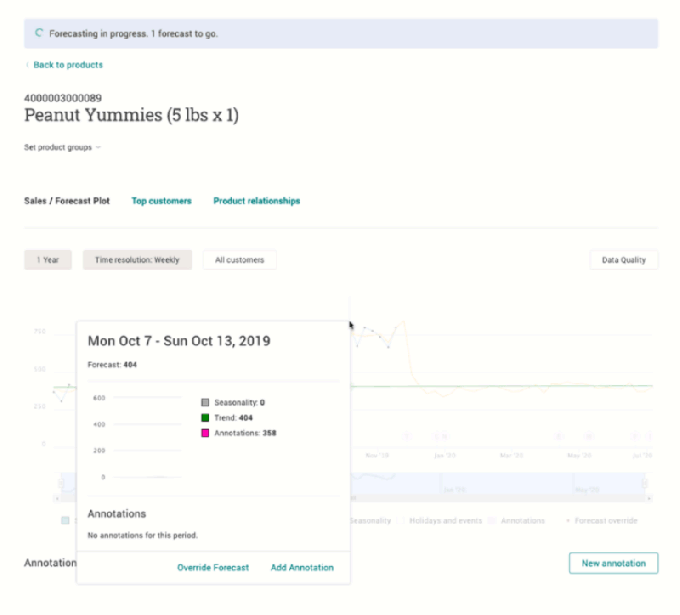The food industry may be the biggest industry in the world, but it’s also one of the least efficient. BCG says 1.6 billions tons of food, worth $1.2 trillion, is wasted in food every year and those numbers are only expected to go up.
A number of players have stepped up to try and solve their own portion of the problem, and one such solution is Crisp. The company, which received $14 million in Series A funding last year led by FirstMark Capital, is today going live with its platform (which has been in beta).
Crisp aims to solve the global food waste problem via demand forecasts. Founder and CEO Are Traasdahl, a serial founder, believes that a lack of communication and data flow between the many players in the supply chain is a main cause for all this waste, a great deal of which happens long before the food reaches the consumer.
Right now, forecasting demand is no where close to a perfect science for many of these players. From food brands to distributors to grocery stores, the problem is usually solved by looking at a spreadsheet from last year’s sales for hours to try to determine the signals that played into this or that SKU’s sales performance.
And then there was Crisp.
Integrated with almost any ERP software a company might have, Crisp ingests historical data from these food brands and combines that data with signals around other demand drivers, such as seasonality, holidays, price sensitivity and other pricing information, marketing campaigns, competitive landscape, weather that might affect the sale or shipment of certain produce or other ingredients.
Using these data points, and historical sales data, Crisp believes it can give a much more accurate picture of demand over the next day, week, month or year.

But Crisp isn’t just for food brands, such as Nounós Creamery, a Crisp customer that says its reduced scrapped inventory by 80 percent since switching to the platform. Crisp serves almost every player in the food supply chain, from retailers to distributors to brands to brokers.
And the more customers it gets, the better it is at predicting demand on a very specific level. For instance, the demand forecasting Crisp offers for a particular grocery store, based on external data, will obviously get much better once that grocery store is a customer on the platform.
Traasdahl was initially concerned that his customers would be reluctant to hand over this type of sensitive sales data, and also that players within the industry might be anxious to hand over such data to a platform that’s aggregating everyone’s data, including their competitors. Turns out, the food industry has more of a “better together” mentality.
“Other industries are not as dependent on each other,” said Traasdahl. “If I am a creamery and need to buy blueberries for my yogurt, I may have five different vendors for those blueberries. And if they don’t get delivered on the right day, Costco will yell at me for being late with the yogurt. Everyone in the supply chain is somewhat dependent on each other.”
For that reason, it’s been easier to attract clients to the platform than expected. The prospect of a collaborative demand forecast platform, that’s pulling signals from across the entire industry, is going to be more accurate than siloed demand forecasts produced by a single vendor or brand.
During the beta program, which launched in October, Crisp brought on more than 30 companies to the platform, including Gilbert’s Craft Sausages, SunFed Perfect Produce, Nounós Creamery, Hofseth, REMA and Superior Farms.
